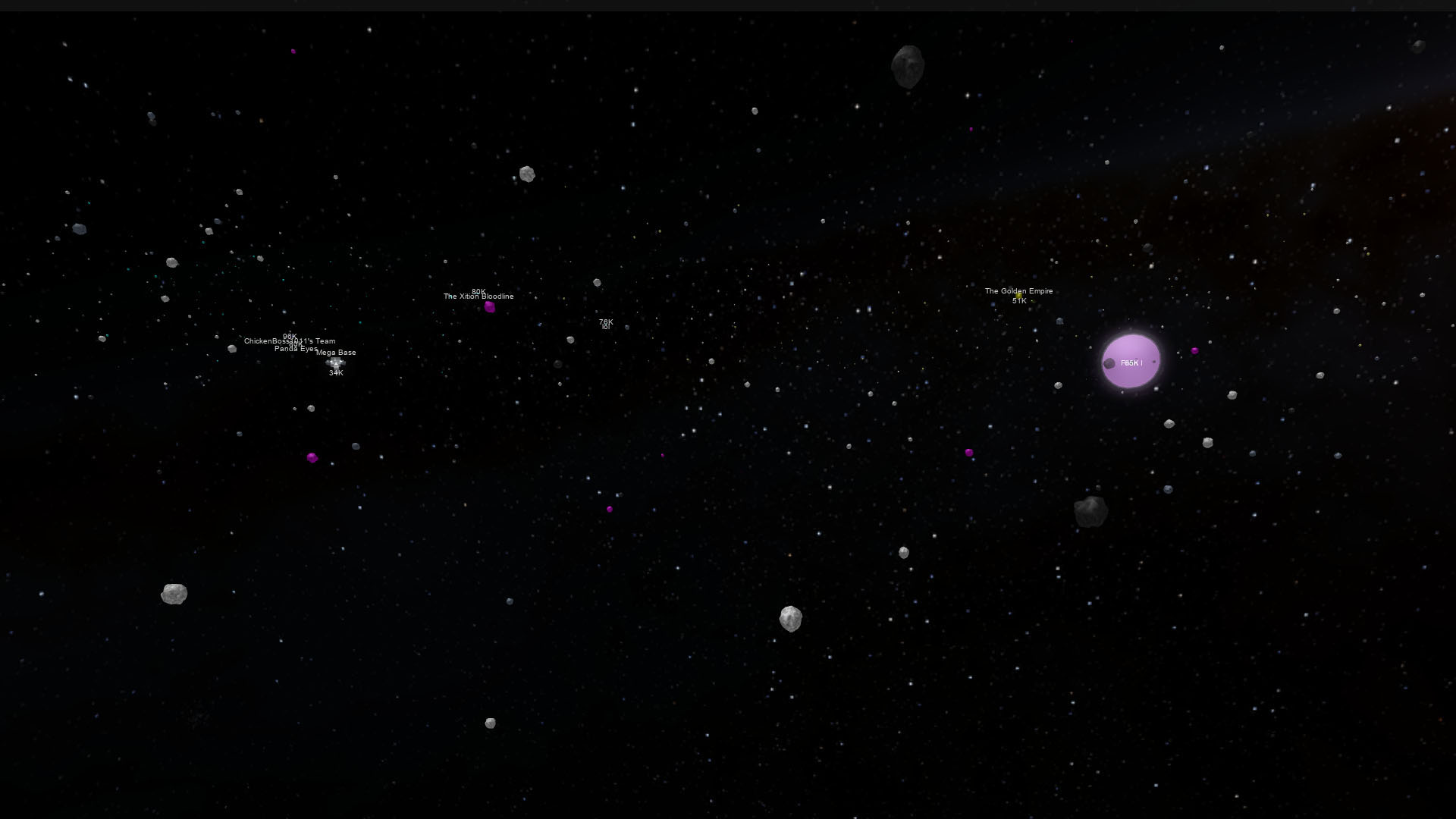Science fiction is about exploring beyond what’s known and understood. Games that offer a glimpse into the vast mysteries of space and technology will always stir the imaginations of players. As a sci-fi developer, the need to invent and speculate is both your greatest asset and your greatest burden: you have the freedom to do whatever you want, but you also have an obligation to avoid the easy and familiar. We spoke with two accomplished sci-fi developers, qqtt991 (Be an Alien: Renewal) and rcouret (Galaxy), about what opportunities and pitfalls are encountered when developing the unknown.
New Frontiers
“Most of the reason why I chose to start a sci-fi alien game is because it gave me complete freedom with design and mechanics,” said qqtt991. “Without terrestrial handcuffs on my imagination, I can change all the rules and create something amazing that nobody has ever seen, or been before.”
This unbounded creativity is what’s drawn so many visitors to Be an Alien: Renewal. Its world is delightfully unfamiliar: aliens shuffle along with curious shuffling gaits, buzz above the ground, glow and pulse under their skins. They lay eggs, teleport, and glide along webs as thick as ropes. They are recognizable as animals, but if you slipped them into a normal Earth zoo they’d stun and fascinate every guest in the park.

The landscape is weird and gorgeous, but watching the alien bird-thing I’m controlling waddle is every bit as fascinating.
While unchecked creativity is a lot of fun to experience as a player, there’s an obvious trade-off for the developer: making everything from scratch can be daunting. Some parts may end up being trickier than others. While qqtt991 is an expert at whipping up aliens, he struggles more with his environments: “It’s quite difficult to create entirely new immersive biomes without them feeling underdeveloped…finding the right balance between Earth-like and alien is challenging, and good foliage design is often a major roadblock for me.”
One key to breaking through these creative blocks is to draw inspiration from reality, but make the details your own. This is how qqtt991 gets the ball rolling when he’s stuck on a new environment: “We know Earth very well and already associate certain feelings with certain natural features. Forests, for example, often tend to feel either mysterious and lonely, or fresh and alive.” Once he’s identified what emotion he wants to evoke, and studied how real-world places create that feeling, he’s ready to begin experimenting with new but similarly effective environments.

There’s a suggestion of terrestrial fungi and root systems, but the flora is distinctly alien.
Making your own rules doesn’t just mean dealing with new creative challenges. Setting your game in space or on an alien world can introduce a lot of subtle gameplay changes that require adjustments to your design. The developer of Galaxy, rcouret, shared one example: “Galaxy has very low gravity which means the players can jump really high (which they love to do), but sometimes, being in space, there isn’t a place to land. This means they have a really long fall which can take upwards of thirty seconds at times to reach the bottom of the map.” Brand new problems require brand new solutions: in this case, returning players to their base after they’ve fallen. It’s always a good idea to give sci-fi games a little extra playtesting to make sure the new rules of the universe don’t bring any new troubles with them.

I was barely in freefall long enough to take this screenshot.
Sometimes your new rules don’t offer problems, but unique opportunities. While developing Galaxy, rcouret struggled to realize his vision of massive servers where forty players could coexist without stepping on each other’s toes, but realized that creating a game set in space offered one advantage: he could achieve a grander sense of space without actually needing to fill it with processor-choking detail. “With a good space skybox, the galaxy feels massive and you don’t expect there to be much other than a few asteroids while warping from one base to the next.” By recognizing the advantages of developing in space, he was able to provide a sense of exploration and breathtaking scale that wouldn’t be possible in a normal Roblox game.

Pictured in this screenshot: resources to collect, worlds to explore, battlegrounds to conquer.
Taking your players to strange new worlds can be a technical and creative challenge, but as the consistent player bases of Galaxy and Be an Alien: Renewal can attest, the wonder and magic that results is well worth the trouble. It’s up to you to turn the vast unknown of space into something immersive and wonderful. Remember to be inventive, always on the lookout for inspiration, diligent in playtesting, and open to new and unexpected opportunities. And above all else: shoot for the stars.